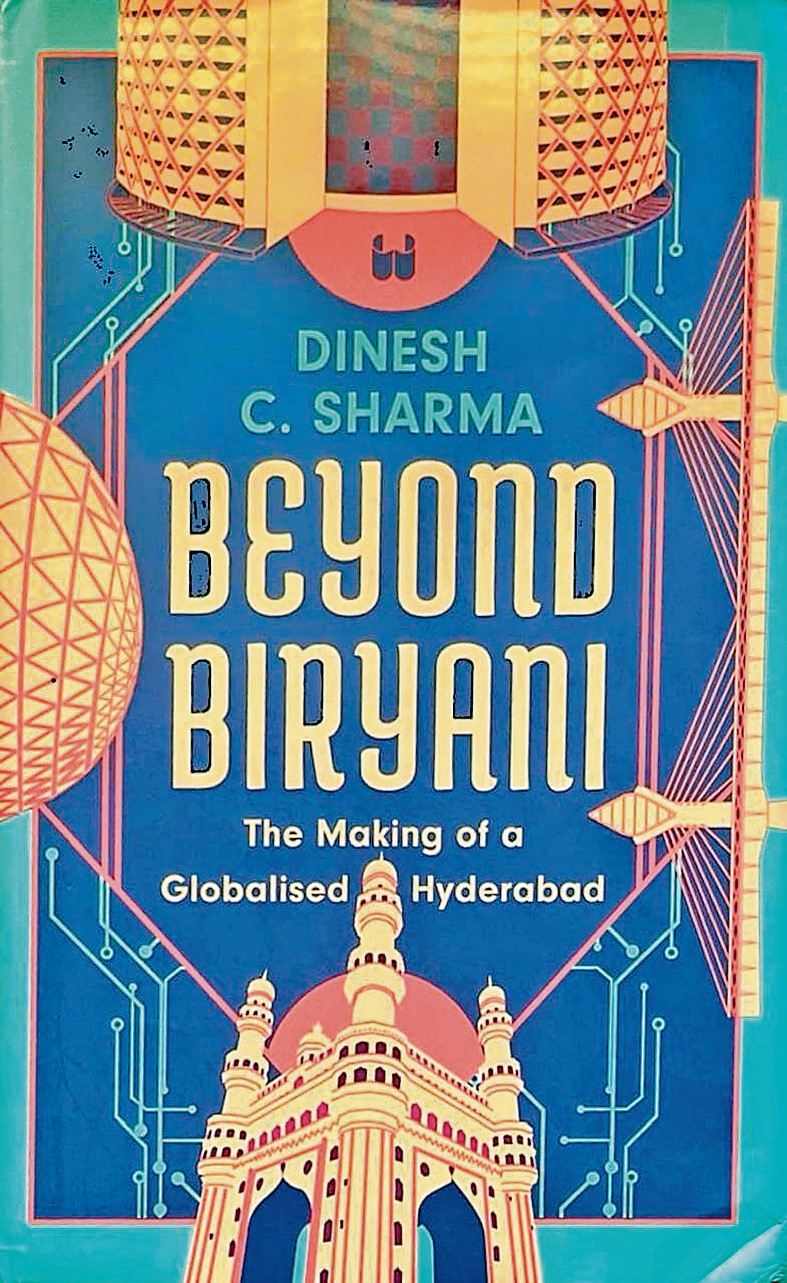The metamorphosis of Hyderabad, originally founded in 1591 to ease the congestion and water scarcity in the existing Qutub Shahi capital of Golconda, into a global hub of technology and industry is a fascinating journey that recently published book “Beyond Biryani ” by Dinesh C. Sharma ( Westland), tries to capture with absorbing details. For the author who is a Hyderabadi himself (now settled in Delhi) Hyderabad must be a place in his heart and hence, he tries to recount its story with all the affection and sensitivity, it deserves.
As the author recounts in the introductory chapter:
“This book is an attempt to capture the remarkable story of the rapid transformation of Hyderabad from what was, at best a proto colonial city in a quasi-Mughal princely State until 1940s, to a modern and vibrant metropolis. Fortunately, I have been a witness to almost the entire journey, either directly or through collective family memories.”
This is paradoxically the strength and weakness of the book, that is the result of painstaking research sponsored by Jawaharlal Nehru Memorial Fund. While it affords a ring side view to the author, at times it is vulnerable to personal predilections and prejudices which he tries to avoid diligently, of course. There is also the tendency to miss the woods for the trees and references to persons and their roles in shaping the destiny of the City over the centuries, which was undeniably significant in this case. Hyderabad was lucky to have successive ruling elite from the Qutub Shahi, Asaf Jahis and post independence period that were forward looking and ably assisted by competent Ministers/bureaucrats who were able to execute their visions into reality.
In this regard, one cannot overemphasise the contributions of Hussain Shah Wali (who made Hussain Sagar as a man made water source in 1562, which became a trigger for Hyderabad 30 years later), Mir Momin Astrabadi, the Persian Architect who designed Hyderabad, inspired by Isfahan in Iran, Salar Jungs I,II, III, Sir M Vishweshwariah who introduced modern town planning after the devastating Musi floods in 1908, Edward Lawrie, Ronald Ross and Sherwani who introduced modern scientific temper and education system prodded by British Residents to address the needs of the place during World War I and subsequent period. Similarly, in the 1990s, coinciding with the liberalisation of Indian economy and advent of IT/ ITES boom that pitchforked Hyderabad to the big league, it was lucky to have visionary political leadership that wanted to take advantage of the circumstances, ably assisted by a number of competent bureaucrats viz, R Chandrasekhar, Randeep Sudan, J Satyanarayana, Sheela Bhide, Jayesh Ranjan and Arvind Kumar. Yours truly was also fortunate to contribute a bit in Cyberabad, Knowledge city at Raidurg, Financial Dist, HICC and Life science cluster at Genome valley, which has been a labour of love over two decades.
What is important about this book, is that it faithfully and meticulously records these milestones in the evolution of Hyderabad, laced with interesting sidelights and anecdotes, not widely known, which makes it eminently readable. It is not a cumbersome and boring account of events and dates but lively narrative of the concomitant processes that are analysed with the academic rigour, that makes it unique. A case in point is the chapter on Osmania University, originally based on the Japanese model of vernacular education, which subsequently spawned several research institutions in its proximity, such as, IICT, NIN, CCMB, CDFD, NGRI, IDPL which made it the epicentre of a modern science cluster, which promoted Pharma and Biotech industry around Hyderabad in later years.
It was almost a catalytic process that led one thing to another, or “chain reaction” as the author calls it and Hyderabad was fortunate to be part of this unique unfolding of cascading eco system.
The author also tries to allude to the cost of development in terms of its effects on heritage and ecology and devotes the penultimate chapter entitled “the price of development” and highlights the need to address these concerns, shared by many old Hyderabadis like himself who bemoan the decline of the syncretic Ganga Jamuni tehzeeb of the place and its old world, laid back charm. Luckily, all is not lost and Hyderabad, at least some part of it, continue to exude the aura of a traditional city with a modern face, which prompted the famous National Geographic journal to name the city as one of 10 most attractive tourist destinations in 2015!
All in all, this book is indeed a unique effort to document the recent history of Hyderabad and trace its evolution over the last 4 centuries, which faithfully records the milestone and processes that make it what it is today.
A must read for lovers of urban development and modern history and of course, those who cherish Hyderabad and its cultural heritage. Kudos to the author for this remarkable endeavour.
(Review by BP Acharya , IAS retd, former Special Chief Secretary)




